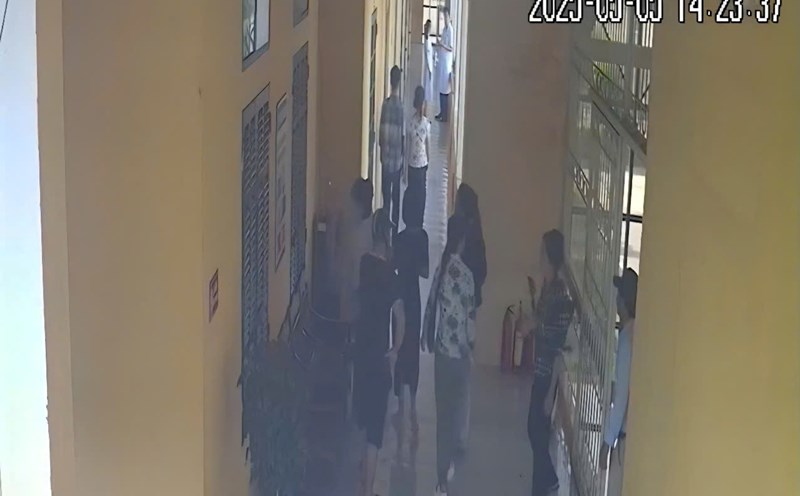The path leading to the future of Vietnamese cultural heritage
Cultural heritage is the spiritual and material values passed down from generation to generation. However, due to the impact of time, nature and humans, many heritages are at risk of being lost. In this context, modern technology has become a powerful tool, not only helping to preserve but also "revive" heritage in a vivid way. One of the outstanding applications is 3D scanning technology. With the ability to reproduce relics in detail and accurately, this technology allows important architectural works and artifacts to be preserved in their original state. For example, in Vietnam, the Thang Long Imperial Citadel has been digitized using 3D technology, helping to preserve the entire structure and details of the relic site. This not only supports research but also creates opportunities to introduce heritage to the public through online exhibitions.
Technology is also a "bridge" that brings heritage closer to the public, especially the younger generation. Mobile applications and video games with content revolving around cultural heritage are becoming increasingly popular. Technology is not only a means of promotion, it is also a solid "shield" to protect heritage. 3D scanning technology helps create millimeter-accurate copies of relics and artifacts, serving research, conservation and restoration. Thanks to that, we can preserve precious cultural values for future generations, even when the original heritage is unfortunately damaged by natural disasters, war or the ravages of time. For example, after the devastating fire that destroyed the roof of Notre Dame Cathedral in Paris, the 3D drawings made beforehand became an important basis for restoration work.
In addition, virtual reality (VR) and augmented reality (AR) are also being applied to create new experiences for visitors. Instead of just looking at artifacts through glass cabinets, visitors can "immerse" themselves in historical space, feel the life of ancient people or witness important events in the past.
Imagine, instead of just admiring ancient artifacts through museum glass, you can "touch" them with virtual reality (VR) technology. You can walk in a majestic Champa temple in the My Son Sanctuary (Quang Nam) recreated in every detail, or admire the splendid beauty of the ancient Hue royal palace through VR glasses. Technology does not stop at reproducing, but can also "revive" the past. Thanks to augmented reality (AR) technology, you can interact with historical figures, listen to them tell stories, and explain unique cultural features. For example, at the Vietnam National Museum of History, visitors can "meet" King Ly Thai To, listen to him talk about the magical dream that led to the move of the capital from Hoa Lu (Ninh Binh) to Thang Long.

New Museums: Attracting Tourists
In recent years, many new museums in Vietnam have applied modern technology, creating a special attraction for visitors. One typical example is Quang Ninh Museum - a unique architectural work combining traditional art and modern technology. Here, visitors can not only admire valuable artifacts but also participate in interactive activities, explore local history and culture through digital technology applications.
Entering the Vietnam Military History Museum, visitors not only admire the artifacts and quiet images of a glorious time, but also "live" in the flow of that heroic history, all thanks to the creative hands of modern technology. For the first time entering the space recreating the 12-day and night Dien Bien Phu campaign in the air in 1972, many young people were overwhelmed and excited. The perfect combination of 3D projection system, touch screen and extended virtual reality technology "pulled" them into the center of the historic battle. From the moment the MIG 21 aircraft, number 361, soared into the sky, participating in the fierce battle, to the heroic moment of shooting down the B52 flying fortress, everything appeared vividly real. Not yet over the surprise, the young people "lived" in another heroic historical moment: the historic Ho Chi Minh Campaign. Wearing virtual reality glasses, they immediately felt like they were sitting in the cabin of a liberation army tank, crashing through the gate of the Independence Palace on April 30, 1975, witnessing the sacred moment when the country was reunited.
In the future, digital museums will not only be a trend but also become an indispensable part of preserving and promoting cultural heritage. With the development of artificial intelligence (AI), big data and the Internet of Things (IoT), museums will become increasingly smarter, bringing visitors personalized and unique experiences. Moreover, digital museums also open up opportunities for Vietnam to build a "digital heritage map", which gathers and connects all heritages across the country. This not only helps to enhance the value of heritage but also contributes to promoting tourism, creating momentum for socio-economic development. However, the application of technology to heritage also poses significant challenges. How to balance technology and traditional values? How to make technology truly a supporting tool, not "overwhelming" heritage? These are questions that need to be pondered and answered.
(Posted on the special edition of Labor Weekend Spring At Ty)









